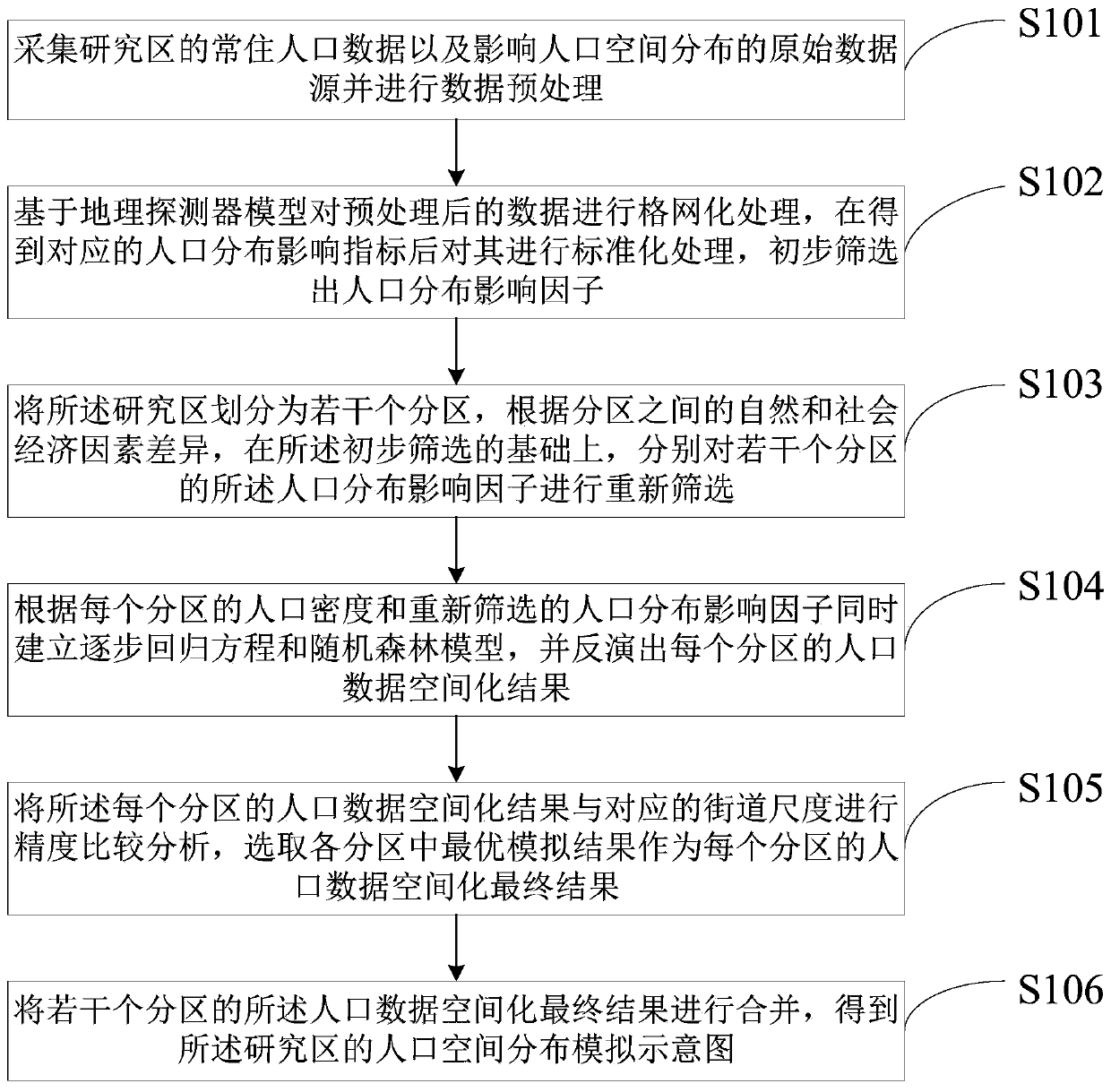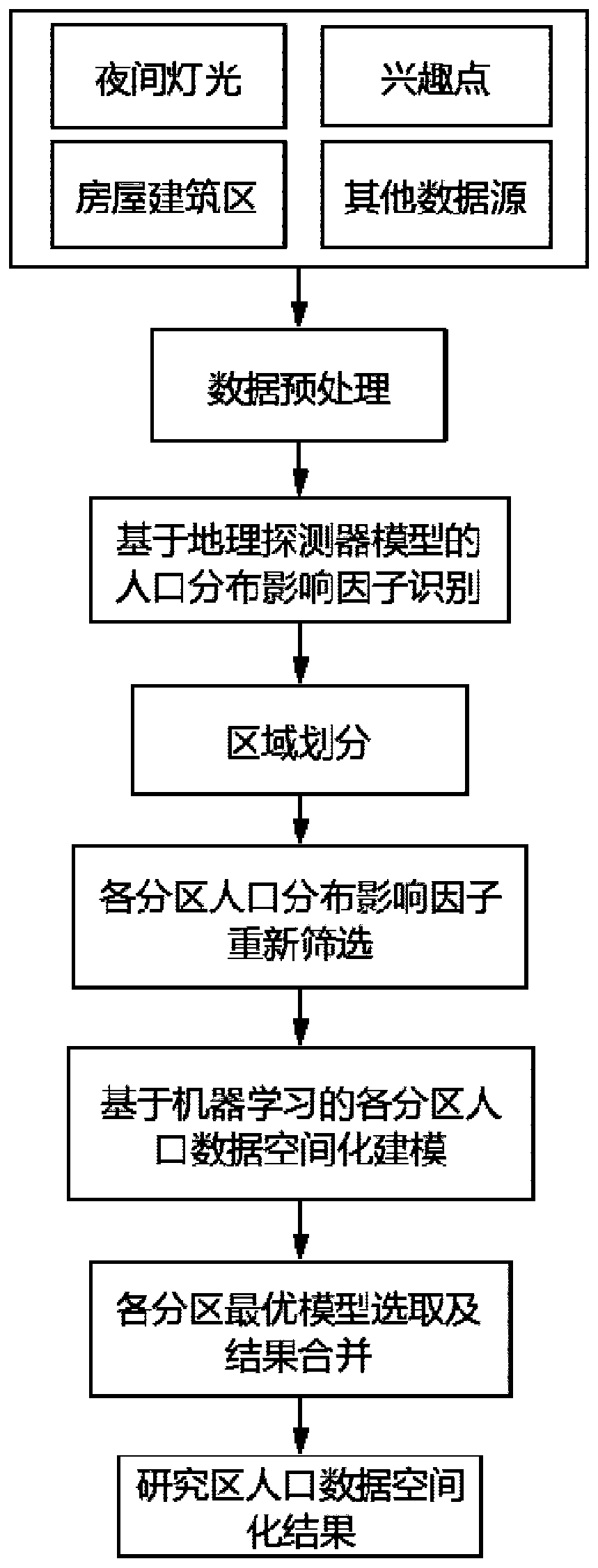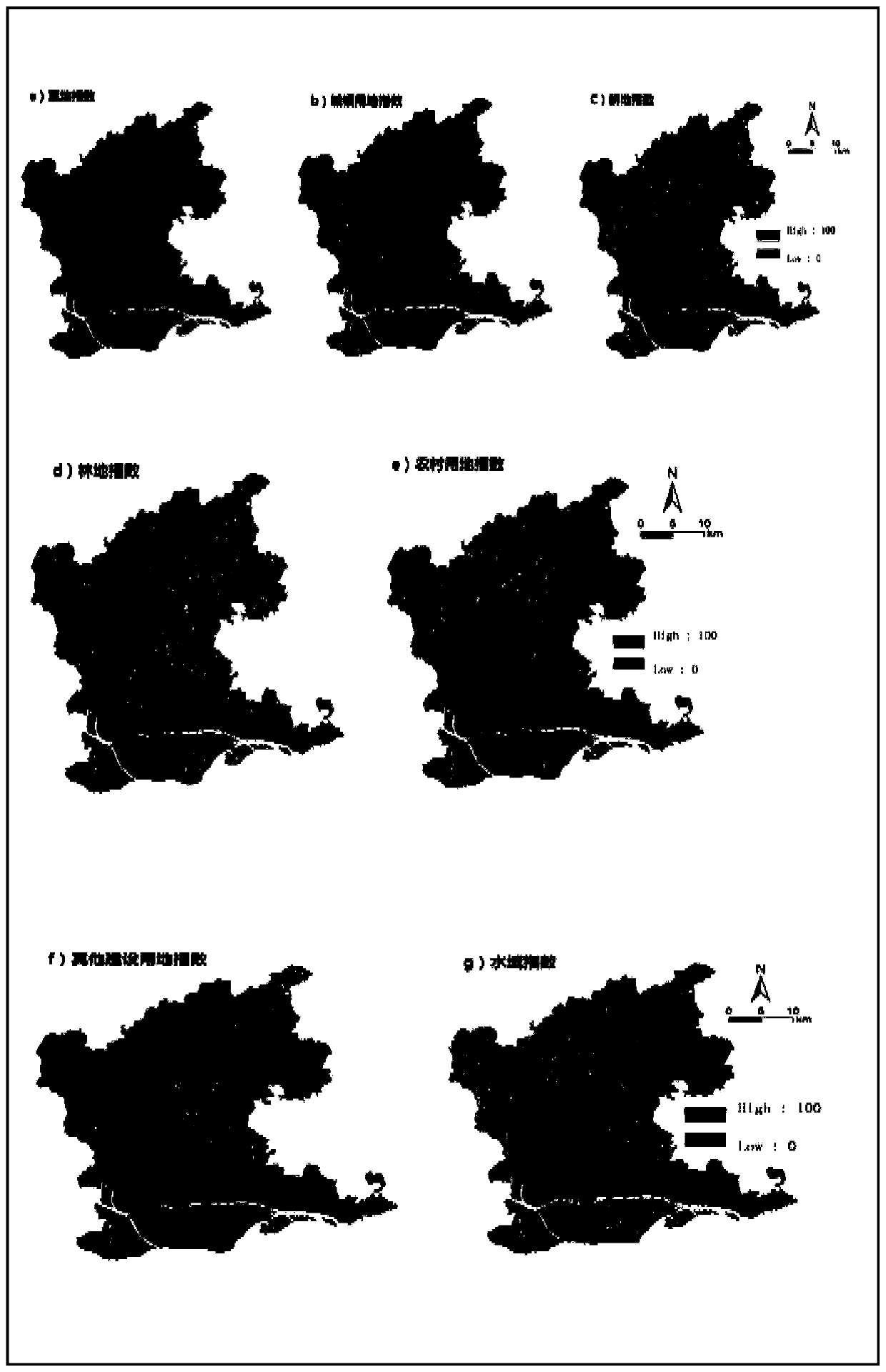Population data spatialization method and system based on partition modeling, and medium
A population data and spatialization technology, applied in the field of population data processing, can solve the problems of poor model practicability, low precision of simulation results, unreasonable selection of influencing factors, etc., and achieve the effect of enhancing interpretability and correcting deviation characteristics
- Summary
- Abstract
- Description
- Claims
- Application Information
AI Technical Summary
Problems solved by technology
Method used
Image
Examples
no. 1 example
[0060] see Figure 1-7 .
[0061] Such as figure 1 As shown, a population data spatialization method based on partition modeling provided in this embodiment includes the following steps:
[0062] S101. Collect the permanent population data of the research area and the original data sources that affect the spatial distribution of the population, and perform data preprocessing;
[0063] Specifically, for step S101, the original data sources such as permanent population data, natural and socio-economic factors affecting the spatial distribution of population, etc. are collected from 106 streets in Yuexiu District, Haizhu District, Liwan District, Tianhe District, Baiyun District, and Huangpu District in Guangzhou. . Such as: land use data, DEM, POI data, road network distribution, night light data, residential housing prices, building area, etc.
[0064] S102. Perform grid processing on the preprocessed data based on the geographic detector model, standardize the correspondin...
no. 2 example
[0124] see Figure 3-8 .
[0125] Such as Figure 8 As shown, this embodiment also provides a population data spatialization system based on partition modeling, including:
[0126] The data preprocessing module 100 is used to collect the resident population data of the research area and the original data sources that affect the spatial distribution of the population and perform data preprocessing;
[0127] The identification factor module 200 is used to perform grid processing on the preprocessed data based on the geographic detector model, standardize the corresponding population distribution impact indicators after obtaining them, and preliminarily screen out the population distribution impact factors;
[0128] The screening factor module 300 is used to divide the research area into several subregions, and according to the differences in natural and socioeconomic factors between the subregions, on the basis of the preliminary screening, the impact on the population distrib...
PUM
 Login to View More
Login to View More Abstract
Description
Claims
Application Information
 Login to View More
Login to View More - R&D
- Intellectual Property
- Life Sciences
- Materials
- Tech Scout
- Unparalleled Data Quality
- Higher Quality Content
- 60% Fewer Hallucinations
Browse by: Latest US Patents, China's latest patents, Technical Efficacy Thesaurus, Application Domain, Technology Topic, Popular Technical Reports.
© 2025 PatSnap. All rights reserved.Legal|Privacy policy|Modern Slavery Act Transparency Statement|Sitemap|About US| Contact US: help@patsnap.com



